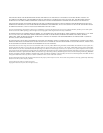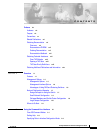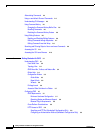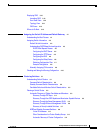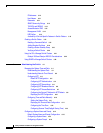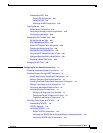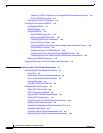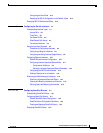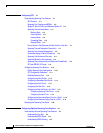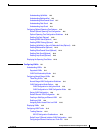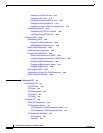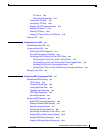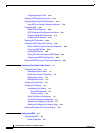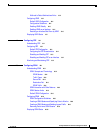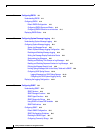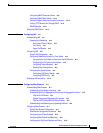
Contents
x
Catalyst 2940 Switch Software Configuration Guide
78-15507-02
CHAPTER
11 Configuring STP 11-1
Understanding Spanning-Tree Features 11-1
STP Overview 11-2
Spanning-Tree Topology and BPDUs 11-2
Bridge ID, Switch Priority, and Extended System ID 11-3
Spanning-Tree Interface States 11-4
Blocking State 11-5
Listening State 11-6
Learning State 11-6
Forwarding State 11-6
Disabled State 11-6
How a Switch or Port Becomes the Root Switch or Root Port 11-7
Spanning Tree and Redundant Connectivity 11-7
Spanning-Tree Address Management 11-8
Accelerated Aging to Retain Connectivity 11-8
Spanning-Tree Modes and Protocols 11-9
Supported Spanning-Tree Instances 11-9
Spanning-Tree Interoperability and Backward Compatibility 11-9
STP and IEEE 802.1Q Trunks 11-9
Configuring Spanning-Tree Features 11-10
Default Spanning-Tree Configuration 11-10
STP Configuration Guidelines 11-11
Disabling Spanning Tree 11-11
Configuring the Root Switch 11-12
Configuring a Secondary Root Switch 11-14
Configuring the Port Priority 11-14
Configuring the Path Cost 11-16
Configuring the Switch Priority of a VLAN 11-17
Configuring Spanning-Tree Timers 11-18
Configuring the Hello Time 11-18
Configuring the Forwarding-Delay Time for a VLAN 11-19
Configuring the Maximum-Aging Time for a VLAN 11-19
Displaying the Spanning-Tree Status 11-20
CHAPTER
12 Configuring Optional Spanning-Tree Features 12-1
Understanding Optional Spanning-Tree Features 12-1
Understanding Port Fast 12-1
Understanding BPDU Guard 12-2
Understanding BPDU Filtering 12-3



